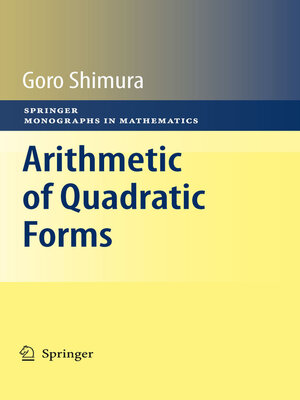
Sign up to save your library
With an OverDrive account, you can save your favorite libraries for at-a-glance information about availability. Find out more about OverDrive accounts.
Find this title in Libby, the library reading app by OverDrive.



Search for a digital library with this title
Title found at these libraries:
| Loading... |
This book can be divided into two parts. The ?rst part is preliminary and consists of algebraic number theory and the theory of semisimple algebras. The raison d'ˆ etre of the book is in the second part, and so let us ?rst explain the contents of the second part. There are two principal topics: (A) Classi?cation of quadratic forms; (B) Quadratic Diophantine equations. Topic (A) can be further divided into two types of theories: (a1) Classi?cation over an algebraic number ?eld; (a2) Classi?cation over the ring of algebraic integers. To classify a quadratic form ? over an algebraic number ?eld F, almost all previous authors followed the methods of Helmut Hasse. Namely, one ?rst takes ? in the diagonal form and associates an invariant to it at each prime spot of F, using the diagonal entries. A superior method was introduced by Martin Eichler in 1952, but strangely it was almost completely ignored, until I resurrected it in one of my recent papers. We associate an invariant to ? at each prime spot, which is the same as Eichler's, but we de?ne it in a di?erent and more direct way, using Cli?ord algebras. In Sections 27 and 28 we give an exposition of this theory. At some point we need the Hasse norm theorem for a quadratic extension of a number ?eld, which is included in class ?eld theory. We prove it when the base ?eld is the rational number ?eld to make the book self-contained in that case.






